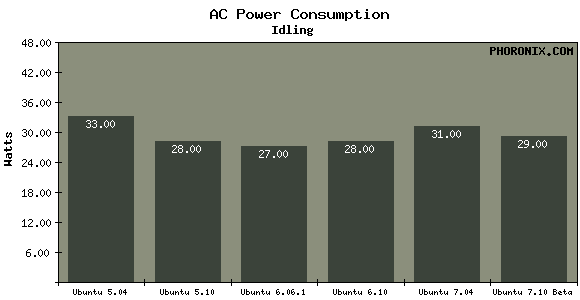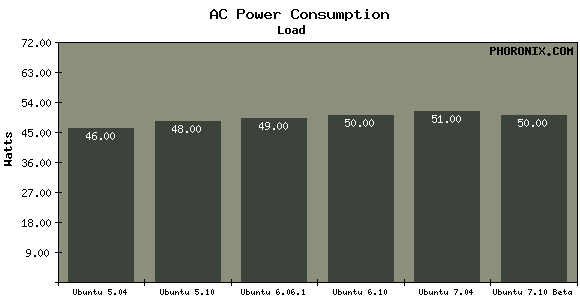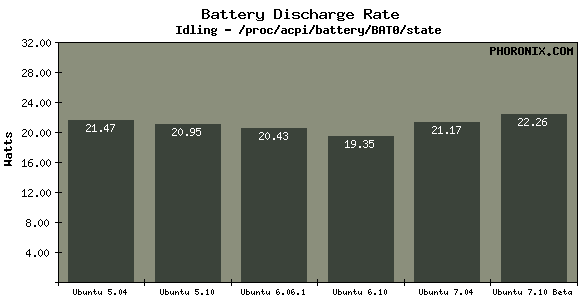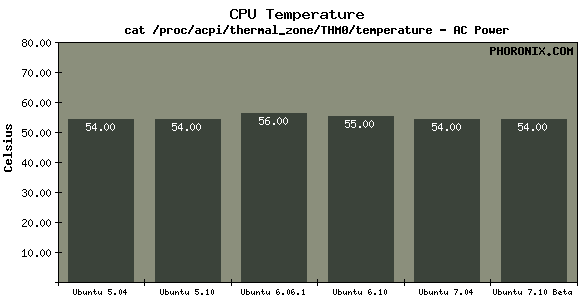Ubuntu Power Saving System Test
Task
Some companies have decided to measure the efficiency of the Ubuntu power saving system. The 7.10 release from day to day, as well as the previous ones, came under the scope, excluding the very first release - 4.10, which was rejected due to compatibility issues with the test machine.
Motivation
In the new release, 7.10, which will be completed with the kernel 2.6.22, the setting appeared ( CONFIG_NO_HZ ). This setting allows you to enable the “interrupt timer on request” mode, which allows the system to idle for long periods of time and eliminates unnecessary (unnecessary) interruptions. This is what should lead to greater battery life on mobile devices.
Test equipment
For tests, a Lenovo ThinkPad R52 laptop of the following configuration was used:
Intel Pentium M 750 (1.86GHz with Enhanced Intel SpeedStep Technology), 2GB of DDR2-533, ATI Radeon X300 64MB, 15.4 "1400 x 1050, Intel 802.11g WiFi, and 80GB IDE .
Composition of tests
Parameters were measured during mains operation and during battery operation. Also, measurements were carried out with a loaded and idle system.
When working from the network, SeaSonic PowerAngel was used to measure power consumption. During measurements in idle mode, GNOME was started, with the default settings, the screensaver is deactivated. The load test consisted of glxgears and CPU Burn-In launched in addition. Measurements were made after 15 minutes from the moment of launch.
')
Refresh in memory
Some details on the composition of Ubuntu releases:
- Ubuntu 5.04 (2.6.10 kernel, X.Org 6.8.2)
- Ubuntu 5.10 (2.6.12-9 kernel, X.Org 6.8.2)
- Ubuntu 6.06.1 (2.6.15-26 kernel, X.Org 7.0.0)
- Ubuntu 6.10 (2.6.17-10 kernel, X.Org 7.1)
- Ubuntu 7.04 (2.6.20-15 kernel, X.Org 7.2.0)
- Ubuntu 7.10 (2.6.22-12 kernel, X.Org 7.2 / X server 1.3)
results
Test results you can see on the following diagrams:





Links
A source
Energy Saving on Linux on Intel Platform
Source: https://habr.com/ru/post/15059/
All Articles